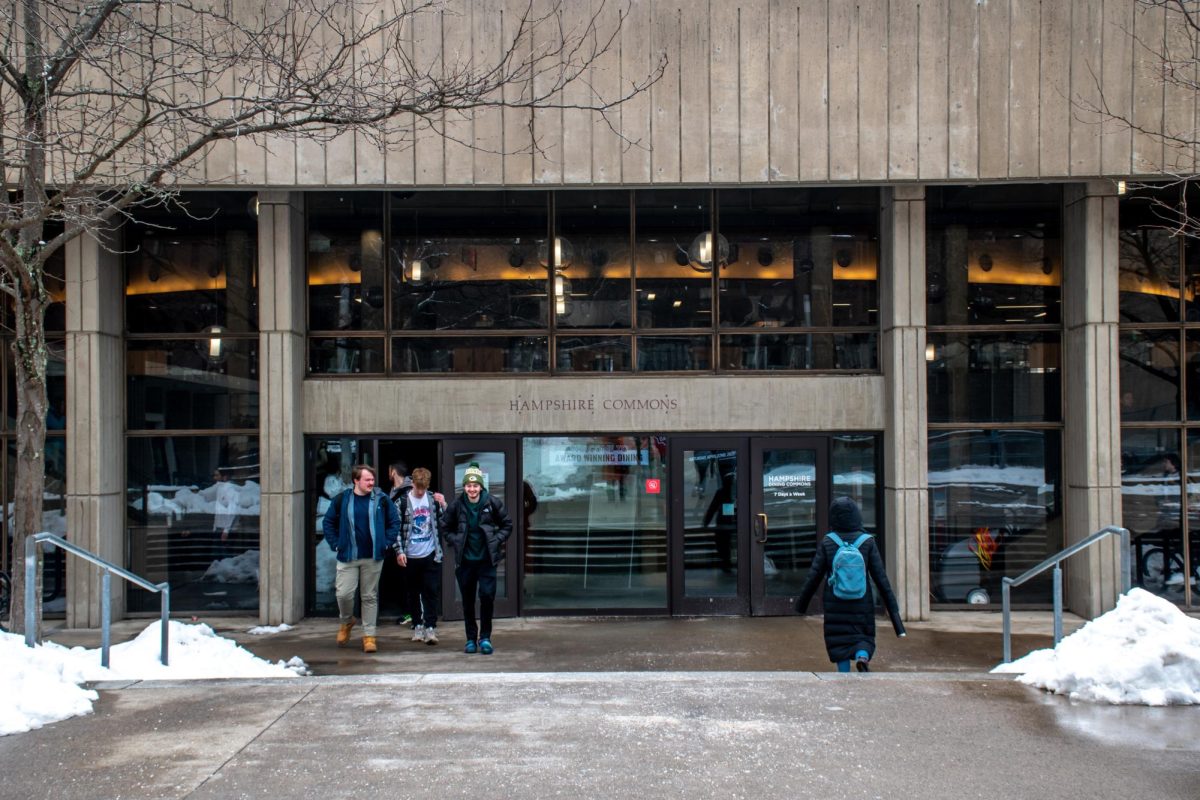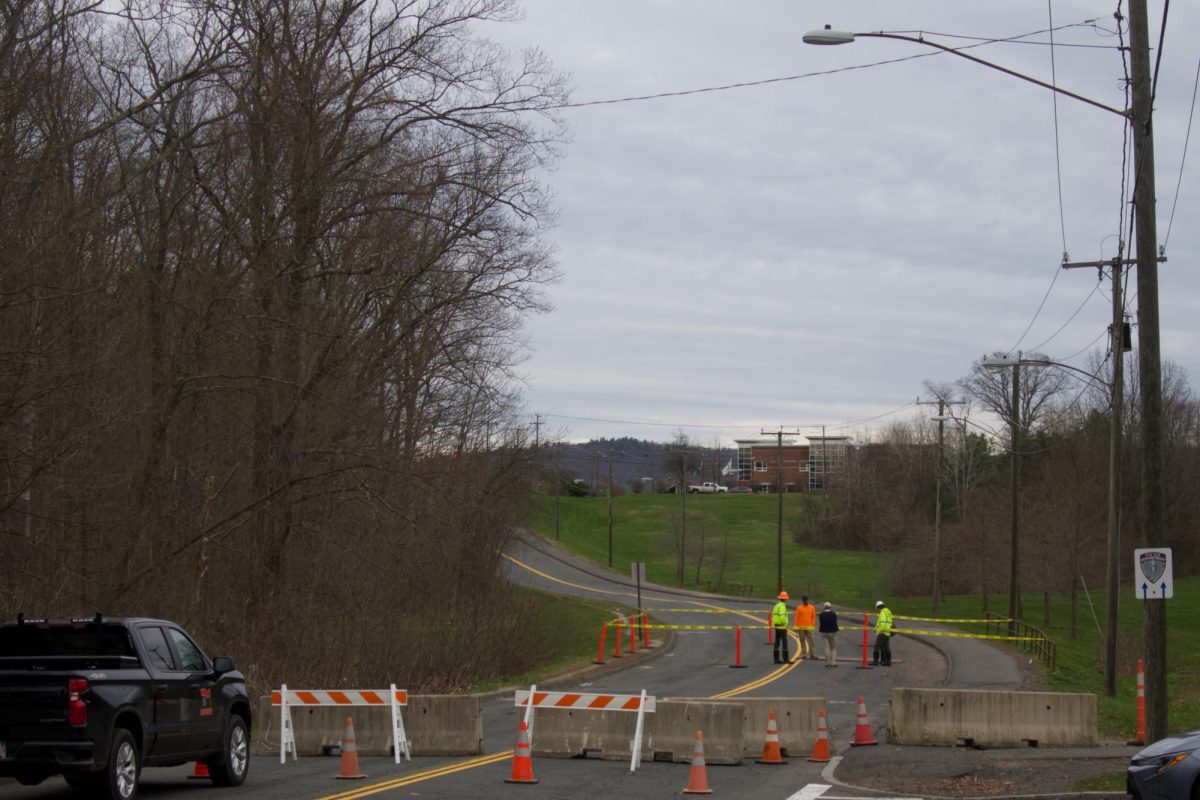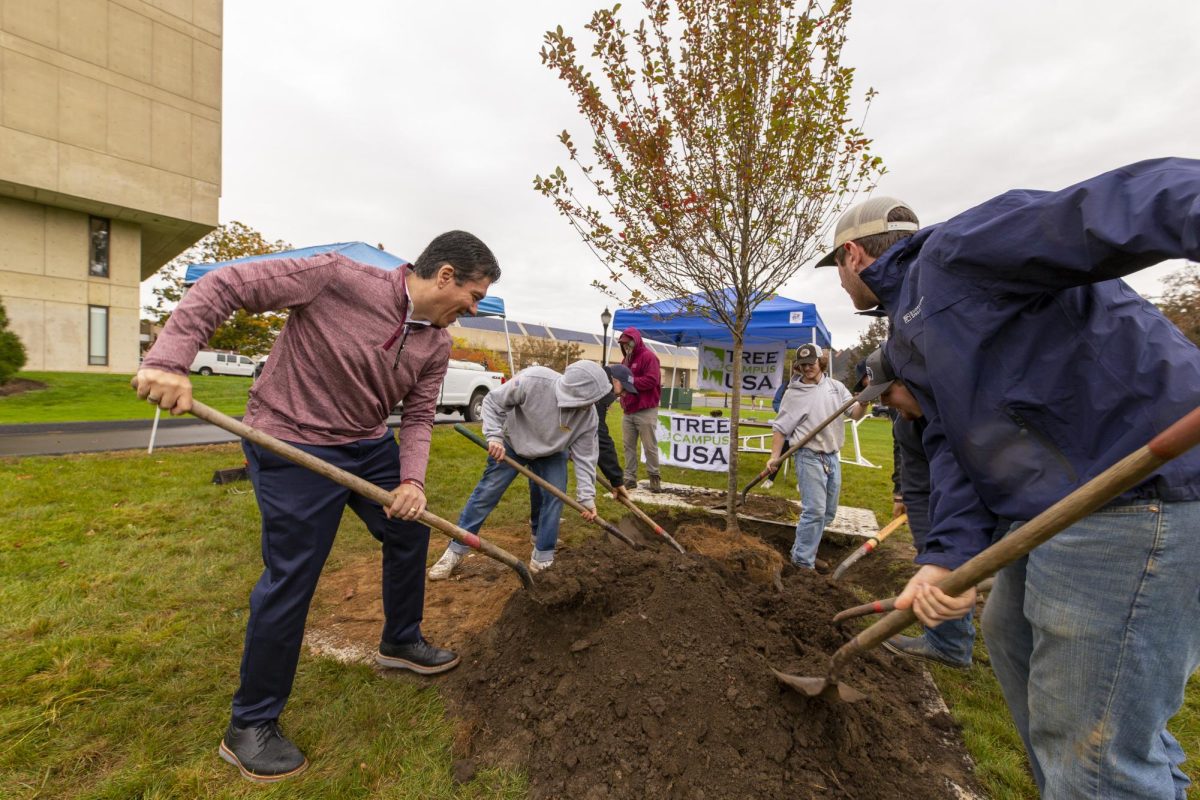
The University of Massachusetts Office of Emergency Management hosted a “full-scale active threat exercise” on March 19 in and around the Franklin Dining Commons, according to a press release. The simulated active-shooter training involved more than 100 volunteers and emergency responders.
Jeff Hescock, director of emergency management at UMass said the exercise will “simulate an active threat/active-shooter situation on campus.”
The training was paid for through a $106,500 grant awarded to UMass from the Massachusetts Executive Office of Public Safety and Security, according to the release.
According to Hescock, $63,000 of the grant was paid to Florida-based consulting firm Tetra Tech, which organized the training. The funds, which are dispersed to the state through the Department of Homeland Security, are only available to public state institutions.
Amherst police and other local and state-first responders joined UMPD in the daylong training. A pamphlet distributed at the event said the goal of the training was to “test organizational and infrastructure interdependencies, communication, collaboration and policy responses to an active shooting on campus.”
Police closed off areas around Franklin during the active-shooter scenario phase of the training. Signs leading onto campus warned of “police training in progress.”
Hescock said other sections of the training focused on “emergency operations center activation and an open discussion workshop on recovery planning and operation.”
There were five phases of training in total.
Inside Franklin, police and volunteers simulated a real life school shooting situation. UMPD responded with the number of staff typically on duty on a typical day – about eight officers. State police assisted volunteers who played victims.
“You practice like you play,” Hescock said. “Deputy Chief Ian Cyr worked really hard with his team to make this as real as possible.”
Police used non-lethal ammunition called “simunition,” a colorful marking ammo that can be cleaned up after firing but sounds like a real gun when fired.
Following the tactical and operations sections, the training turned to information management. Trainees attended a mock press conference where they learned how to field questions from reporters and how to manage emergency situations a day, week, month and year after the event.
The UMass Office of Emergency Management conducts regular trainings. Last summer, it had to activate the emergency response system to manage a gas leak that shut down portions of the campus.
According to Hescock, the goal is always ensuring the safety and security of faculty, staff and students.
“It’s an endless cycle of preparedness, things are always changing,” Hescock said. “We’re always hoping to update our plans and procedures and these exercises allow that to happen.”
Jason Kotoch can be reached at [email protected] and followed on Twitter @jasonkotoch.[liveblog]


















